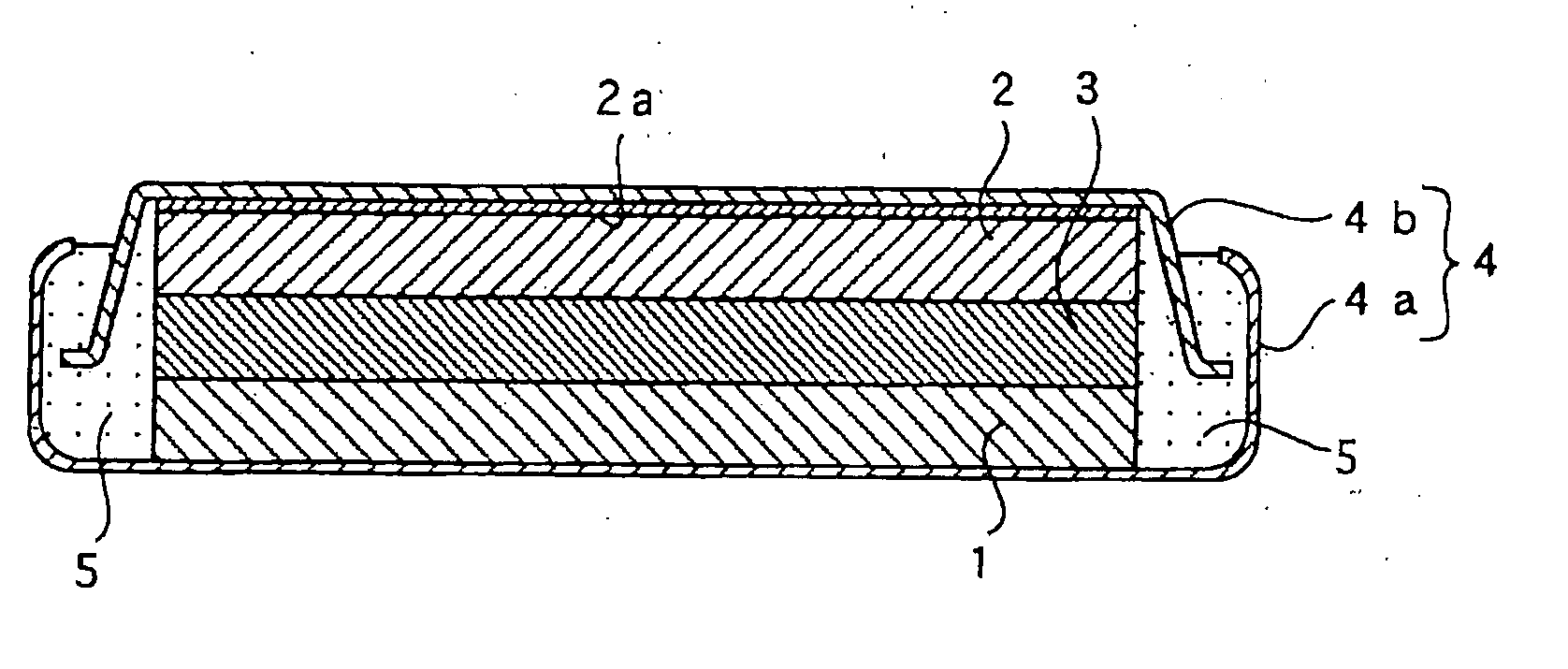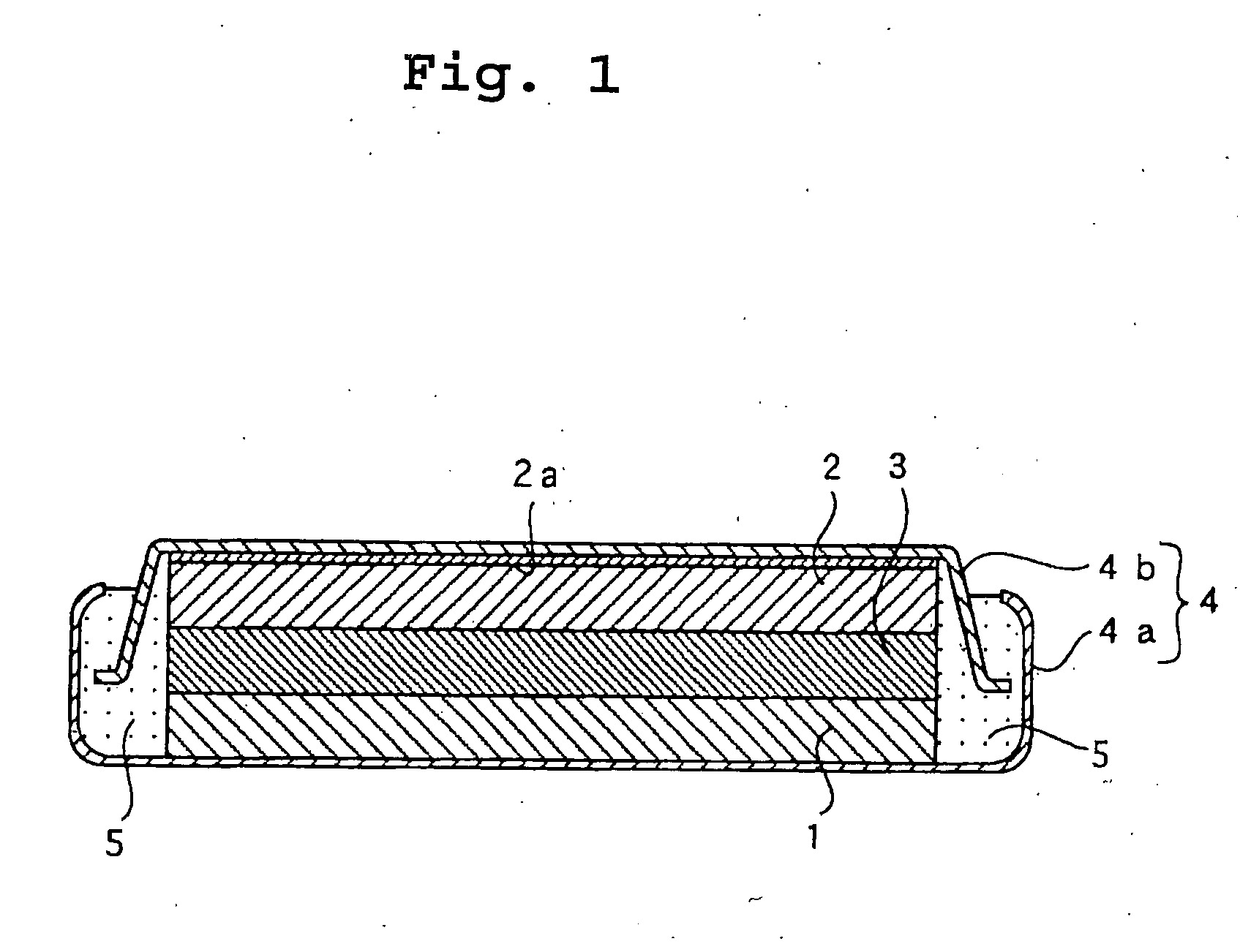Lithium secondary battery
a secondary battery and lithium ion technology, applied in the field of lithium secondary batteries, can solve the problems of difficult charge and discharge, deterioration of battery storage characteristics, and reduced heat stability of nonaqueous electrolyte, so as to improve discharge characteristics and storage characteristics.
- Summary
- Abstract
- Description
- Claims
- Application Information
AI Technical Summary
Benefits of technology
Problems solved by technology
Method used
Image
Examples
example 1
(Example 1)
[0035] A flat coin shaped test battery as shown in FIG. 1 having a diameter of 24.0 mm and a thickness of 3.0 mm was prepared.
[0036] A graphite powder (d.sub.002=0.336 nm, Lc>100 nm) was immersed in melted pitch and was dried to obtain graphite coated with pitch. The graphite coated with pitch was carbonized at 1,100.degree. C. for two hours to prepare graphite coated with low crystalline carbon thereon as a carbon material. An intensity ratio (R) (I.sub.D / I.sub.G) obtained by Raman spectroscopy of the carbon material was 0.40. A ratio (I.sub.110 / I.sub.002) of a peak intensity of crystalline (110) planes (I.sub.110) to a peak intensity of crystalline (002) planes (I.sub.002) by X-ray diffraction analysis of the carbon material was 1.1.times.10.sup.31 2.
[0037] 97.5 parts by weight of the carbon material, 1 part by weight of a styrene-butadiene rubber, and 1.5 part by weight of carboxymethylcellulose were mixed and water was added to the mixture to prepare a slurry. The slu...
example 2
y weight of VC and 10 parts by weight of VEC
example 3
y weight of VC and 5 parts by weight of VEC
PUM
| Property | Measurement | Unit |
|---|---|---|
| thickness | aaaaa | aaaaa |
| thickness | aaaaa | aaaaa |
| diameter | aaaaa | aaaaa |
Abstract
Description
Claims
Application Information
 Login to View More
Login to View More - R&D
- Intellectual Property
- Life Sciences
- Materials
- Tech Scout
- Unparalleled Data Quality
- Higher Quality Content
- 60% Fewer Hallucinations
Browse by: Latest US Patents, China's latest patents, Technical Efficacy Thesaurus, Application Domain, Technology Topic, Popular Technical Reports.
© 2025 PatSnap. All rights reserved.Legal|Privacy policy|Modern Slavery Act Transparency Statement|Sitemap|About US| Contact US: help@patsnap.com


